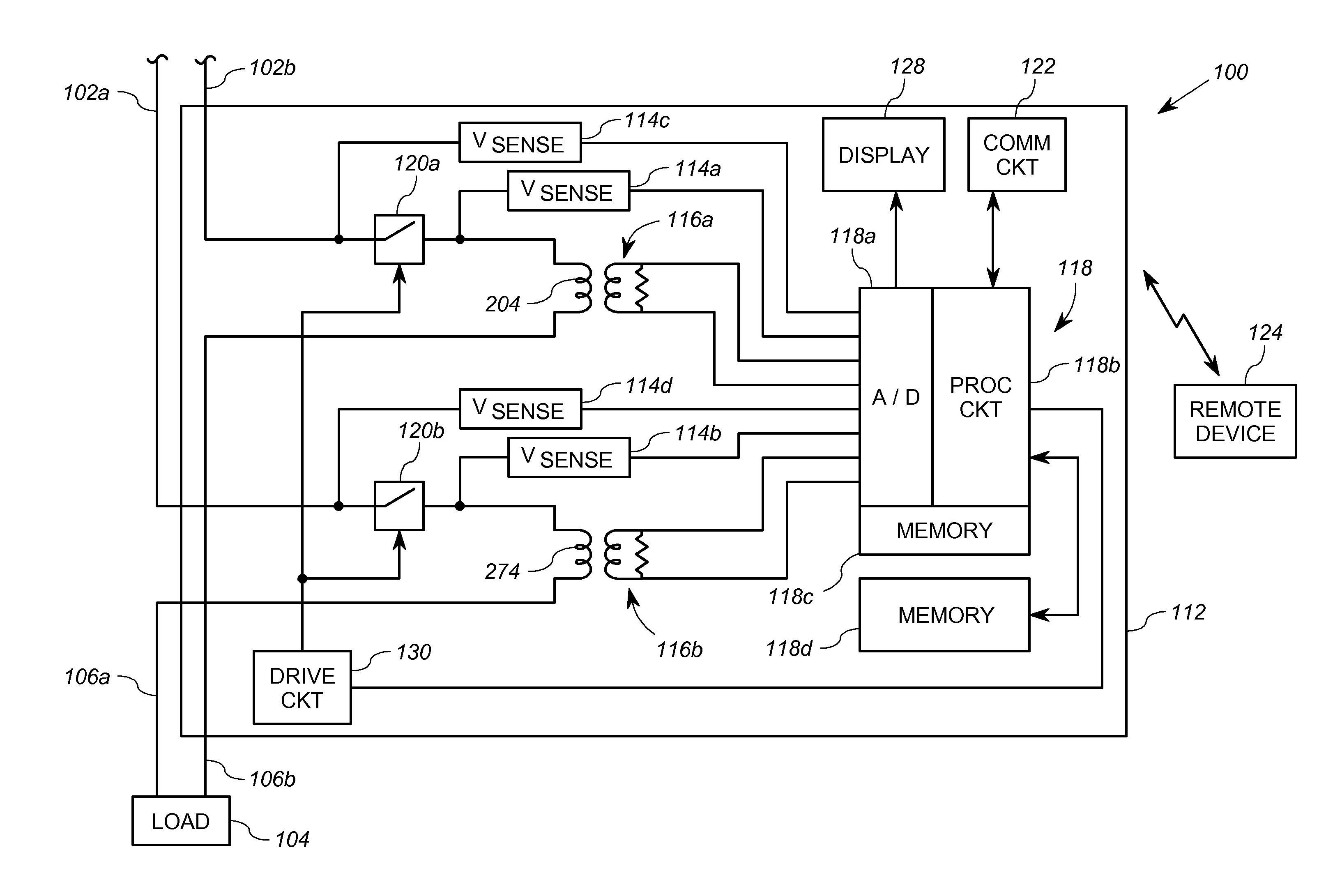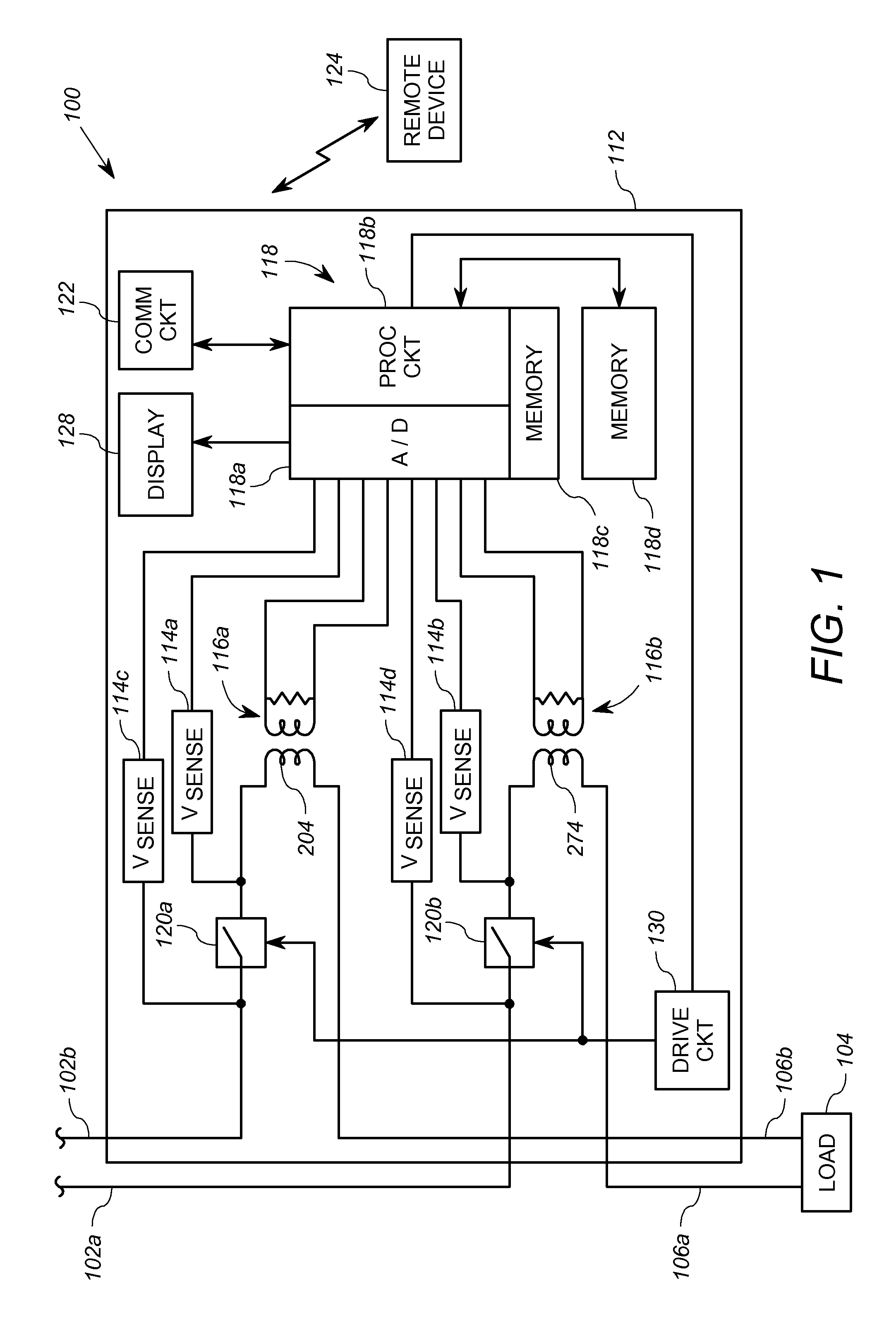Element Resistance Measurement in an Electricity Meter
- Summary
- Abstract
- Description
- Claims
- Application Information
AI Technical Summary
Benefits of technology
Problems solved by technology
Method used
Image
Examples
Embodiment Construction
[0017]Referring now to the drawings, and more particularly to FIG. 1, a diagram of an electrical utility meter 100 constructed according to aspects of the present invention is shown. It will be appreciated that the one or more inventive aspects described herein may be implemented in many configurations of electricity meters, wherein the meter includes electrical elements in series with the AC line voltage, and is not limited to one having the specific architecture of the meter in FIG. 1.
[0018]In FIG. 1, the meter 100 is operably coupled to utility power lines 102a, 102b. The utility power lines 102a, 102b are connected to a source of electricity, such as a power transmission and distribution system, not shown. A load 104 (typically a consumer of electrical power) is connected to the power lines 102a, 102b through respective feeder lines 106a, 106b. The meter 100 is operably coupled at the intersection of the feeder lines 106a, 106b and the power lines 102a, 102b to detect the amount...
PUM
 Login to View More
Login to View More Abstract
Description
Claims
Application Information
 Login to View More
Login to View More - R&D
- Intellectual Property
- Life Sciences
- Materials
- Tech Scout
- Unparalleled Data Quality
- Higher Quality Content
- 60% Fewer Hallucinations
Browse by: Latest US Patents, China's latest patents, Technical Efficacy Thesaurus, Application Domain, Technology Topic, Popular Technical Reports.
© 2025 PatSnap. All rights reserved.Legal|Privacy policy|Modern Slavery Act Transparency Statement|Sitemap|About US| Contact US: help@patsnap.com



